The world around us
An exploration of people, places, basic human needs, and the effects that weather, seasonal change, and geography have on each.

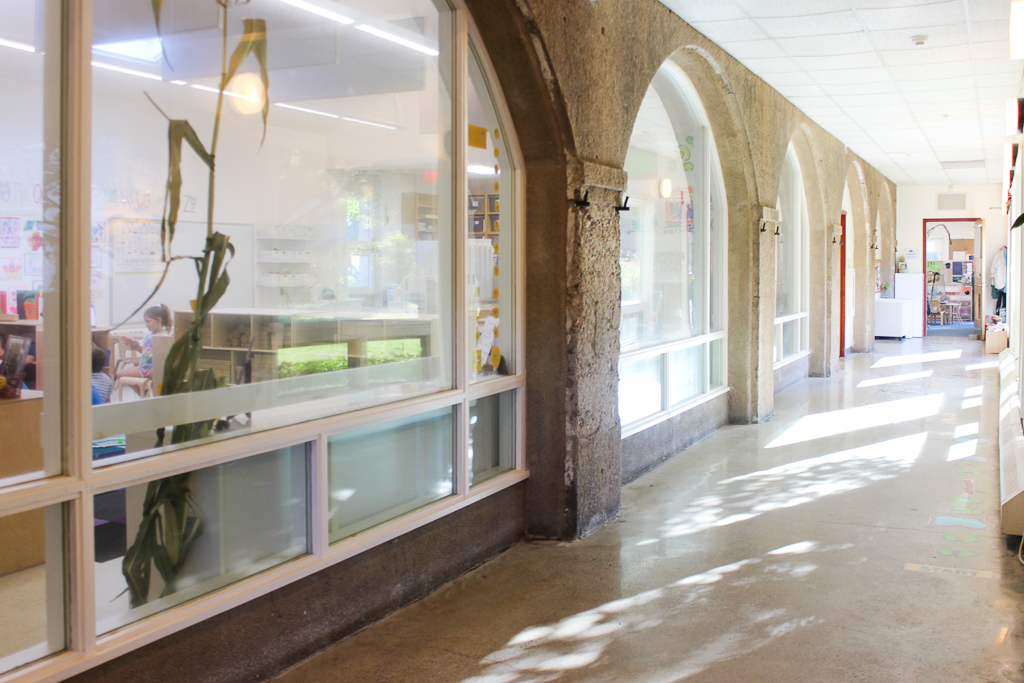
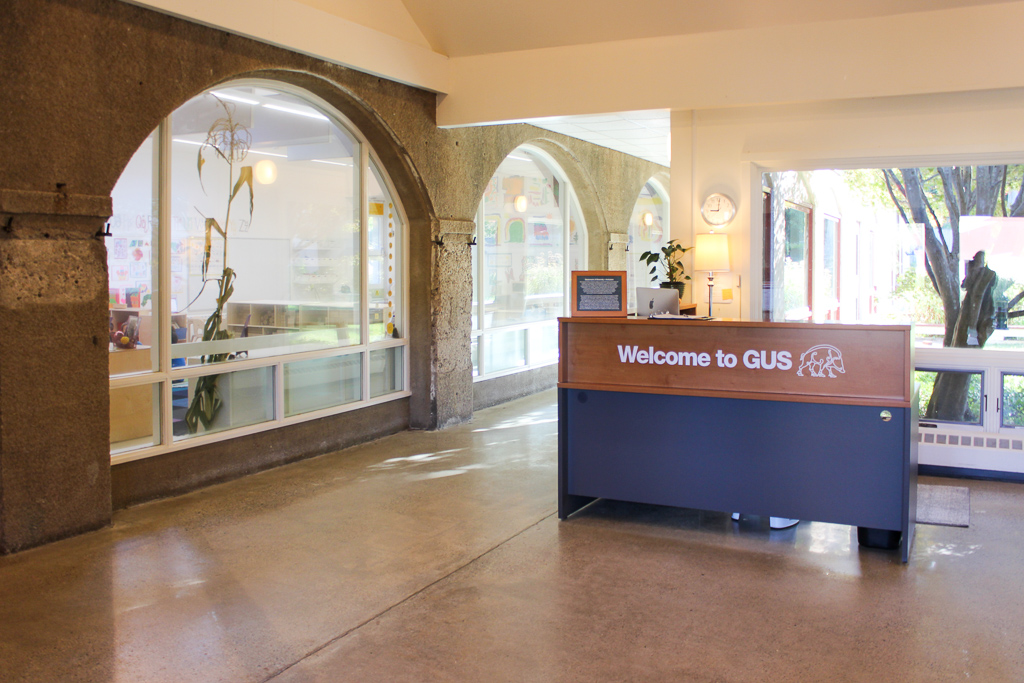
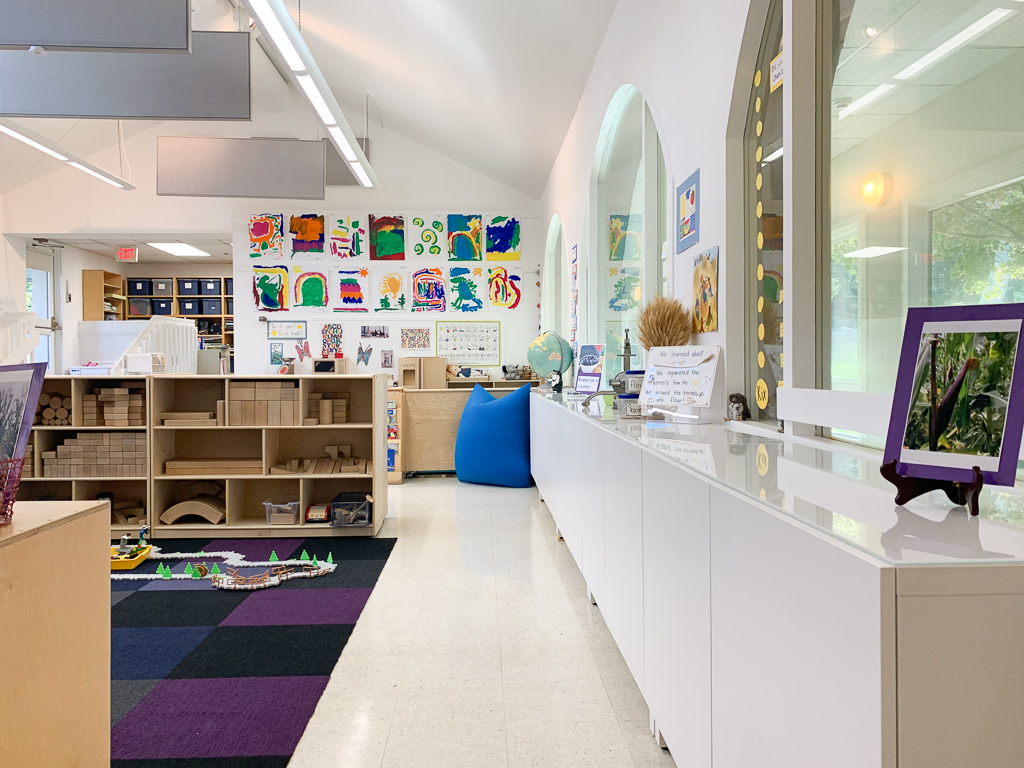

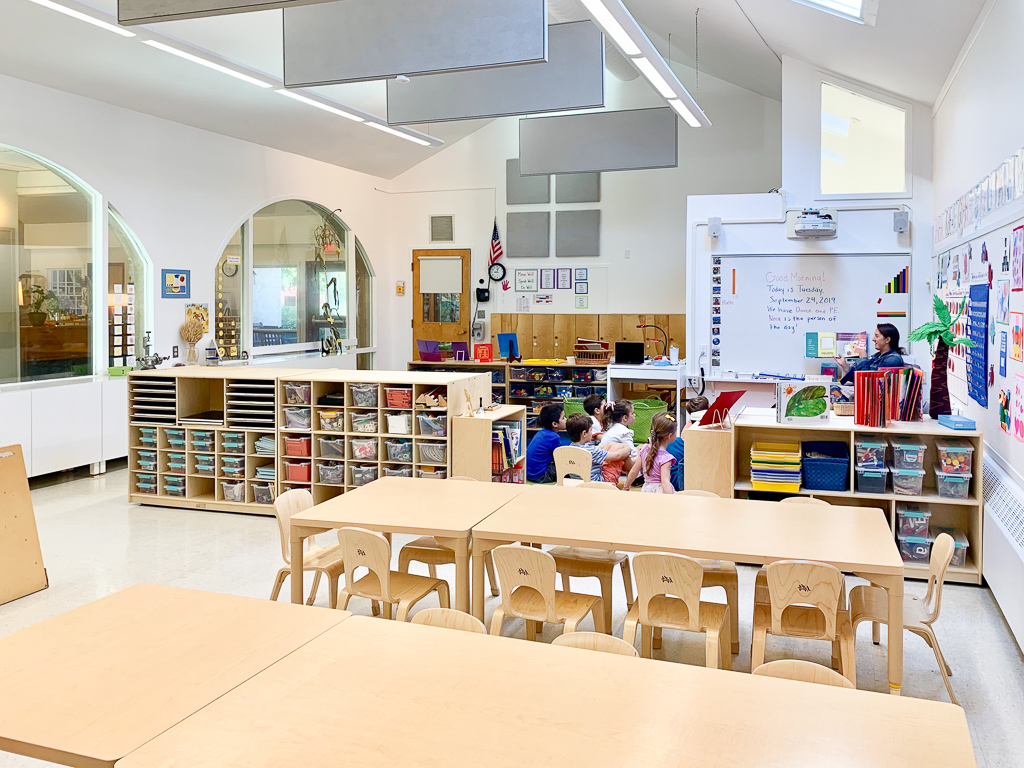




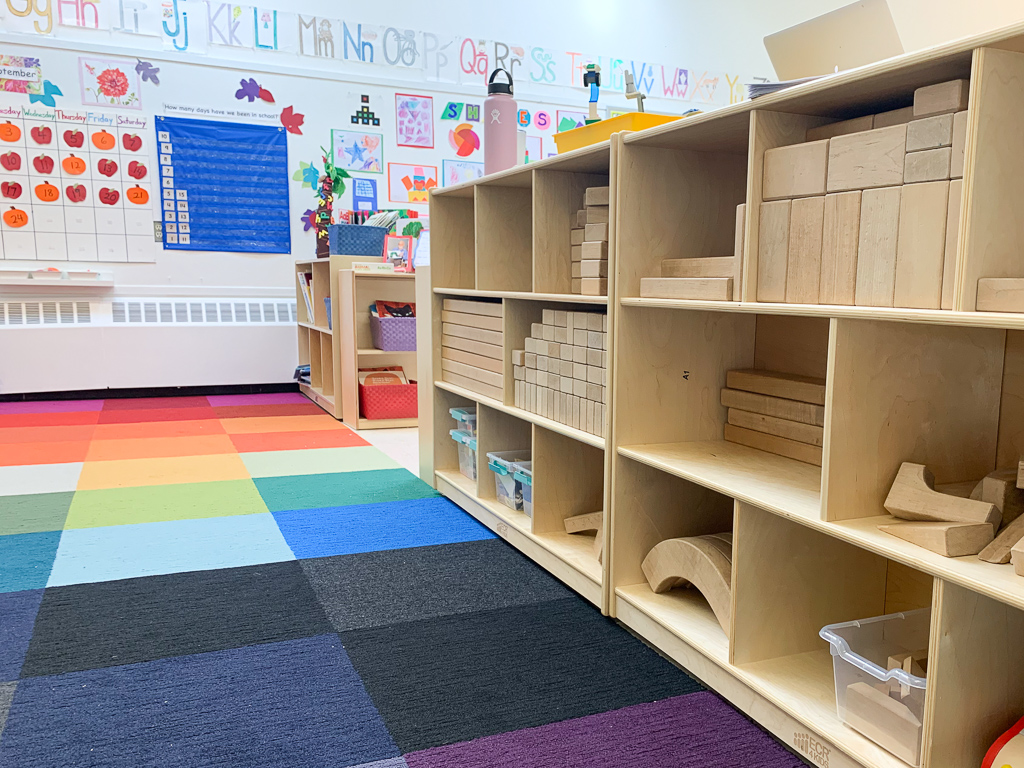
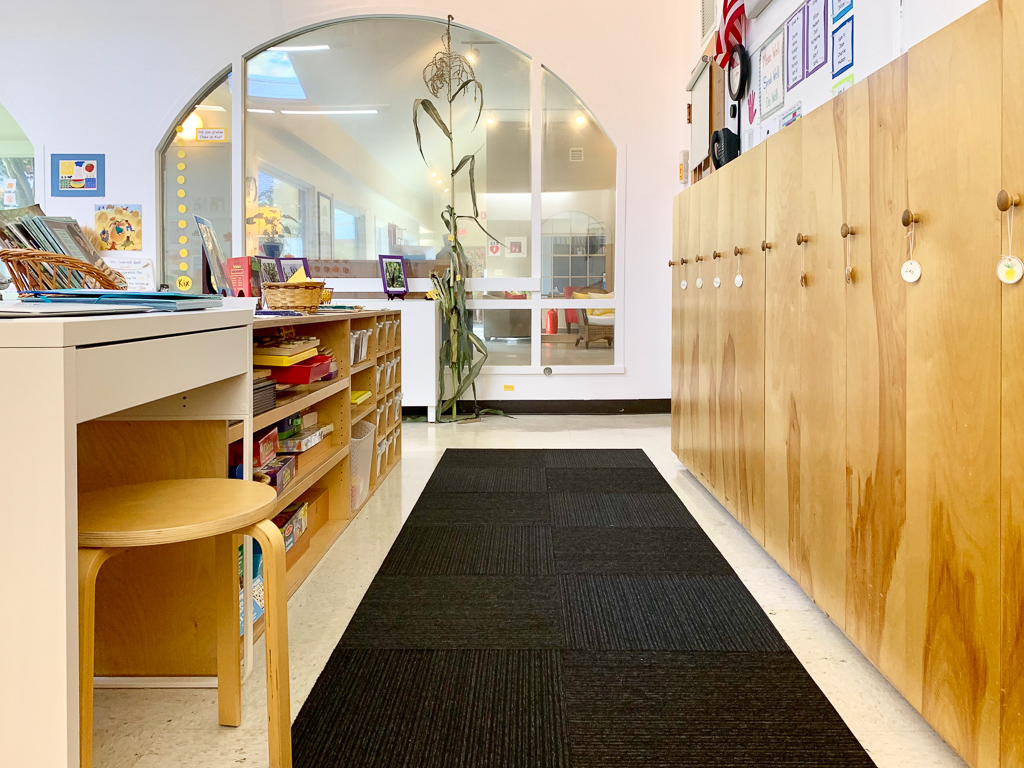

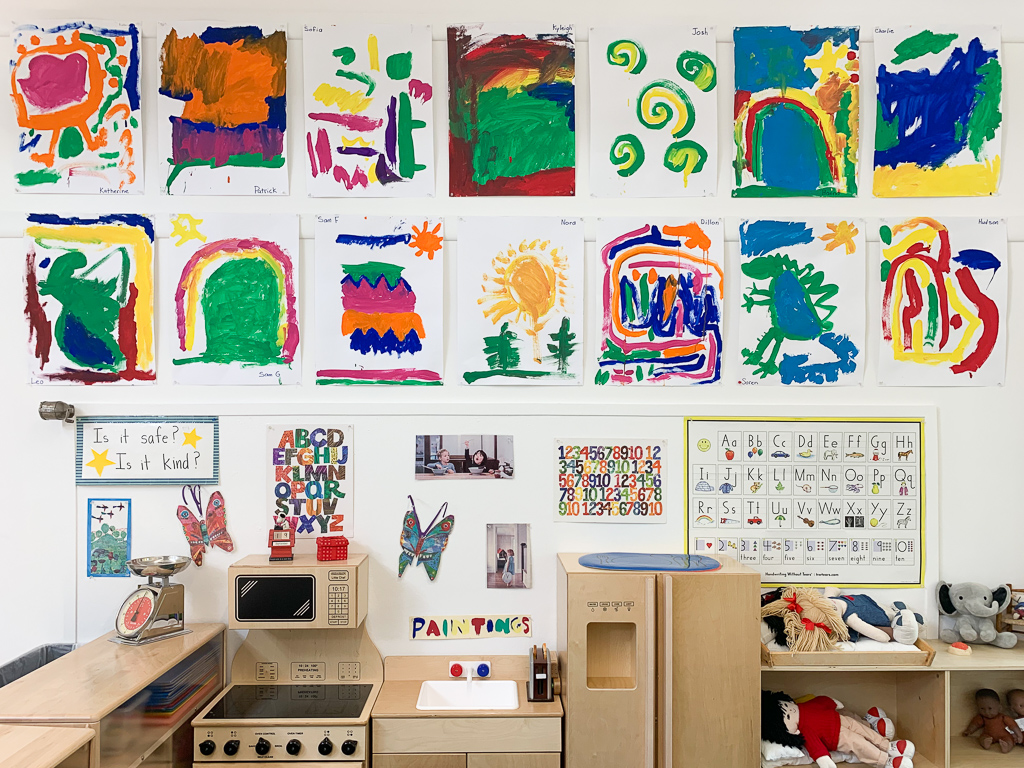
Our Curriculum
+ Science + Social Studies
Our theme, “The World Around Us,” engages the students’ innate enthusiasm for learning about and making sense of the world. There are many opportunities for field trips and hands-on learning in our exploration of how we satisfy our basic needs for food, clothing, and shelter. We learn about multi-stepped processes (such as planting, growing, harvesting, and preparing) that satisfy these needs. We study kindergarten physics—motion in humans and animals, motion in nature (wind, water, and sound), gravity and friction. We learn about simple machines and seasonal weather. In our clothing unit, we spin, weave, knit, and sew. Each child makes a winter hat to bring home. In the spring, we build a doll-sized house model from the foundation up, after exploring shelter here and around the world.
+ Language Arts
Our kindergarten environment is rich in intentional literacy opportunities. We teach literacy skills in small-group lessons, devoting one day of each week to journal writing, with the goal of having the children write simple sentences and stories. The children learn about sounds in words and strengthen their skills in spelling and handwriting. On the other days, we focus on the multiple strands involved in reading acquisition, which include phonemic awareness, alphabetic principle, phonics, sight vocabulary, attention to reading strategies through simple text, and comprehension.
+ Mathematics
We teach math to both whole and small groups, dividing our focus equally among math concepts, procedures, and vocabulary. Children use concrete materials and problem-solving techniques to ensure understanding and develop number sense. Kindergarten math lays the foundation for math study in many areas, including patterns, geometry, measurement, and computation. Cuisenaire rods are a manipulative used by the math program at every grade level. In kindergarten, the rods introduce the children to place value and computation.
+ Social/Emotional
In kindergarten, children begin to develop a sense of self and actively engage in their classroom environment. We allow children the time, space and support to tackle interpersonal issues within the classroom at the time they occur. They interact in ever expanding circles, starting with individual friendships, their classroom community, and the school community, and particularly, in their relationships with their fifth grade partners. Their community service projects expand the circle beyond the school community, reaching far into the world when they form a partnership with a school in Nevis, West Indies.
We engage the kindergartners in lessons from our Open Circle social/emotional curriculum. We gather in an open circle—open because we include one extra space to underscore that there is always room for another voice and no one is ever left out—for a short lesson and conversation and a story or an activity.
+ Spanish
In kindergarten, students are warmly welcomed into la clase de español. Through song, dance, games, acting, and other movement activities, they are exposed to spoken Spanish that is comprehensible and fun. The children are encouraged to speak Spanish whenever they can and learn how to speak in a strong, confident voice with a good Spanish accent. By the end of kindergarten, students should have an appreciation for Spanish as a fun way to make words and talk to new people. They should be able to perform basic greetings without support and provide single-word answers to clear, concise questions on known topics.
+ Visual Arts
In art class, kindergartners explore the work of Vincent Van Gogh and create their own still life drawings. When they are learning about shapes in their math class, the children look at the cut-paper assemblages of Henri Matisse and Joan Miro and then draw, cut, and glue their own assemblages. They experiment with using materials and lines to create texture and with recognizing shapes in bird and animal figures, and they paint and draw animal and bird portraits. Kindergartners also engage in printmaking, 3-D animal sculptures, bird masks, and self-portraits.
+ Music
In music class at GUS, kindergartners: develop their singing voices through vocal play, echoes, and solo singing games; build a repertoire of folk songs, singing games, and seasonal and community songs; develop steady beat competence through body beats, movement, and simple percussion instrument playing; and develop music listening skills through activities and stories based on Carnival of the Animals, by orchestral composer, Saint-Saens.
The “World Around Us” theme is integrated into music classes topically through songs, games, and stories based on animals, bread, apples, and building.
Kindergartners perform alongside their fifth grade partners in all-school Grand Friends’ Day, Solstice, and May Day celebrations.
+ Dance
In dance class, students create, express, communicate, and secure confidence through the study of movement. They participate in exercises that foster creativity, challenge them physically and expressively, require teamwork, develop identity, promote problem solving, and require that they describe their creative process. Children gain body awareness, coordination, locomotor skills, musicality, and choreography techniques through formal and improvisational modern dance lessons. Kindergartners begin their year of dance learning to use their body language to communicate a favorite experience from the summer. Then, they work in groups to collaboratively physicalize a story, spelling out words with their bodies. In addition to the modern dance curriculum, students are introduced to a variety of cultural dance styles. To broaden our global education and dance advocacy, the entire GUS school participates in Dance Anywhere, an annual worldwide simultaneous celebration of dance!
+ Physical Education
Kindergarten physical education focuses on movement and games that incorporate many different movements. (running, skipping, hopping, leaping). We also work on group tasks including forming lines, circles, and following directions. Our goals are to encourage healthy habits of physical activity, develop strong motor skills, and foster respectful play. We add some simple chase and tag games so students can begin to develop strategies for enhancing their own performance. All students participate in all games and activities. We create a noncompetitive environment in the lower school community to cultivate cooperation and good sportsmanship as the children mature.
+ Community Service
For their community service project, kindergartners form a partnership with a school in Nevis, West Indies. They interact through video technology, photos and writing to learn about the culture in Nevis and describe their own culture. Specifically, they sponsor a Bring Your Teddy Bear to School Day event to raise money to purchase supplies for the Nevisian school. They create posters, announce their event at an all-school meeting, and collect donations from all the classrooms.

